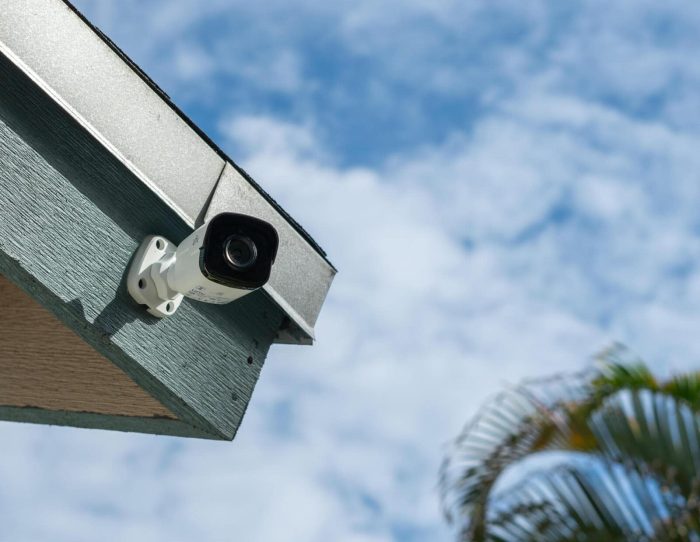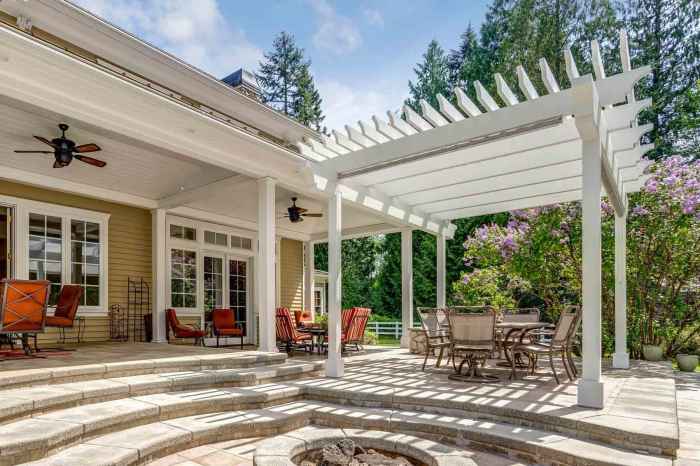Choosing the right exterior siding for your house is a crucial decision that can impact both aesthetics and functionality. From classic options like wood to modern choices like vinyl, the world of exterior siding offers a plethora of possibilities to enhance your home's curb appeal and durability.
This guide delves into the key factors to consider, installation processes, maintenance tips, and more to help you make an informed choice for the best exterior siding for your house.
Types of Exterior Siding
When it comes to choosing the right exterior siding for your house, there are several options available, each with its own set of pros and cons. It's important to consider factors like durability, maintenance requirements, and overall aesthetic appeal before making a decision.
Vinyl Siding
Vinyl siding is a popular choice for homeowners due to its affordability and low maintenance requirements. It is available in a wide range of colors and styles, making it easy to customize the look of your home. However, vinyl siding may not be as durable as other materials and can be prone to cracking or fading over time.
Wood Siding
Wood siding offers a classic, natural look that can add warmth and character to your home. It is a renewable resource and can be painted or stained to match your preferred color scheme. However, wood siding requires regular maintenance, including painting or staining every few years to protect it from the elements and prevent rot or decay.
Fiber Cement Siding
Fiber cement siding is a durable and low-maintenance option that is resistant to rot, fire, and pests. It can mimic the look of wood or stucco without the same level of upkeep. While fiber cement siding is more expensive than vinyl, it can last for decades with minimal maintenance, making it a cost-effective choice in the long run.
Brick Siding
Brick siding is a timeless choice that offers excellent durability and insulation properties. It can withstand harsh weather conditions and requires little maintenance beyond occasional cleaning. However, brick siding can be expensive to install and may not be as versatile in terms of design options compared to other materials.
Factors to Consider
When choosing the best exterior siding for your house, there are several important factors to take into consideration to ensure that you make the right decision.Climate and Location:The climate and location of your home play a crucial role in determining the type of exterior siding that will be most suitable.
For example, areas with high humidity may require siding that is resistant to moisture and mold growth, while homes in regions with extreme temperature fluctuations may benefit from siding with good insulation properties.Importance of Insulation and Energy Efficiency:Insulation and energy efficiency are key considerations when selecting exterior siding for a house.
Proper insulation can help regulate the temperature inside your home, reducing energy consumption and lowering utility bills. Look for siding materials that offer good thermal resistance to enhance the energy efficiency of your house.Impact of Cost and Aesthetics:Cost and aesthetics are also important factors that can influence your decision-making process when choosing exterior siding.
While it's important to stick to your budget, it's also crucial to consider the long-term cost savings that come with investing in high-quality siding. Additionally, the aesthetic appeal of the siding can greatly impact the overall look of your home, so choose a material and style that complements the architecture and design of your house.
Installation Process
When it comes to installing different types of exterior siding, there are specific steps involved in the process. Whether you choose vinyl, wood, fiber cement, or any other material, the installation process will vary slightly. It's essential to understand the necessary tools and materials required for a DIY siding installation, as well as when it's best to hire a professional for the job.
Steps for DIY Siding Installation
- Prepare the surface by cleaning and repairing any damage
.
- Measure and cut the siding panels to fit the dimensions of your house.
- Install the starter strip and corner pieces to ensure a secure base.
- Begin attaching the siding panels following the manufacturer's instructions.
- Finish with trim pieces around windows, doors, and corners for a polished look.
Tools and Materials Required
- Tools: Tape measure, circular saw, level, hammer, nails, siding cutter, utility knife, caulking gun.
- Materials: Siding panels, starter strip, corner pieces, trim pieces, flashing, caulk, insulation.
When to Hire a Professional
- If you lack experience or confidence in your DIY skills, it's best to hire a professional to ensure proper installation.
- Complex designs or challenging areas like high peaks or multiple stories may require professional expertise.
- Professional installers have the tools, knowledge, and experience to complete the job efficiently and effectively.
- Hiring a pro can also save you time and potential costly mistakes in the long run.
Maintenance and Longevity
Proper maintenance is key to preserving the exterior siding of your house and ensuring its longevity. Regular cleaning, inspections, and timely repairs can help extend the lifespan of your siding and keep your home looking fresh and well-maintained.
Tips for Maintaining Exterior Siding
- Regularly clean the siding with a mild detergent and water to remove dirt, grime, and mold.
- Inspect the siding for any signs of damage, such as cracks, warping, or rot, and address them promptly.
- Trim back vegetation and trees near the siding to prevent moisture buildup and potential damage.
- Repaint or reseal the siding as needed to protect it from the elements and maintain its appearance.
Average Lifespan of Siding Materials
- Vinyl siding: 20-40 years
- Fiber cement siding: 25-50 years
- Wood siding: 20-100 years (depending on the type of wood and maintenance)
- Aluminum siding: 20-40 years
Factors Affecting Longevity
- Climate: Extreme weather conditions can impact the lifespan of siding materials.
- Maintenance: Regular upkeep and repairs can help prolong the life of the siding.
- Quality of installation: Proper installation by professionals can contribute to the longevity of the siding.
- Exposure to sunlight: Prolonged exposure to UV rays can cause fading and deterioration of siding materials.
Signs for Repair or Replacement
- Cracks, warping, or rotting of the siding material
- Mold or mildew growth on the siding
- Fading or discoloration of the siding
- Insect infestations or pest damage
Final Thoughts
In conclusion, selecting the best exterior siding for your house involves a careful balance of practicality, style, and longevity. By understanding the various types of siding materials, considering important factors like climate and maintenance, and knowing when to seek professional help, you can ensure your home remains protected and visually appealing for years to come.
Make your house the envy of the neighborhood with the perfect exterior siding choice.
Q&A
What is the most durable type of exterior siding?
While all siding materials have their strengths, fiber cement is often considered the most durable due to its resistance to rot, pests, and fire.
How do I know when it's time to replace my house's siding?
Signs such as warping, cracking, or excessive moisture damage are indicators that it might be time to replace your exterior siding.
Can I install exterior siding on my own?
DIY siding installation is possible with the right tools and materials, but for complex installations or large projects, it's advisable to hire a professional.
Which exterior siding material is the most cost-effective?
Vinyl siding is often praised for its affordability and low maintenance costs, making it a popular choice for budget-conscious homeowners.
Do different siding materials require specific maintenance routines?
Yes, each siding material has unique maintenance requirements. For example, wood siding may need regular staining or painting, while vinyl siding typically only requires occasional washing.




